Sir Seewoosagur Ramgoolam Botanic Garden is named after Mauritius’s long-named first prime minister. Therefore, it is often abbreviated to SSR Botanic Garden. Located in the Pamplemousses district of northwestern Mauritius, it is 14 km from both Port Louis and Grand Baie. Within an area of 33 hectares, it hosts over 650 species of exotic and indigenous tropical plants.

History
The garden traces its origin to the French era, specifically to 1735 when Governor Mahé de Labourdonnais established his estate on the spot and began cultivating vegetables. With this foundation date, the SSRBG is considered the oldest botanical garden in the southern hemisphere, even though a veggie patch doesn’t quite qualify as a botanical garden.
The site’s history as an actual botanical garden began in 1768, when its new director, Pierre Poivre, started importing unique plant species from all over the tropics. In 1775, Nicolas Céré took over and plotted the park’s main alleys and ponds as they are today.
During the first three decades of British rule, the garden fell into desuetude but was then revived with the appointment of director James Duncan in 1849. New plants continued being introduced throughout its history as the Royal Botanical Garden. Ultimately, it was renamed in 1988 to honor Sir Seewoosagur Ramgoolam’s 88th birth anniversary, three years after his passing.
Today, Sir Seewoosagur Ramgoolam Botanic Garden has become a cherished hangout for locals and one of Mauritius’s most frequented tourist attractions. Hundreds of people visit it daily to marvel at its beautiful flora and relish its serenity.
It sounded like a lovely destination for a day trip. So we rode our scooter and reached it an hour’s drive from Mahebourg.
Hours, entrance, tickets
The National Botanical Garden of Mauritius is open every day (including Sundays and holidays) between 08:30 and 17:30. The gate is located at the park’s north end. A large parking lot is adjacent to the entrance (parking location). Tickets cost us 300 MUR per person (adult foreigners) at the time of our visit. Locals, residence permit holders, children, and large groups paid less. For up-to-date information, check out the garden’s official website.
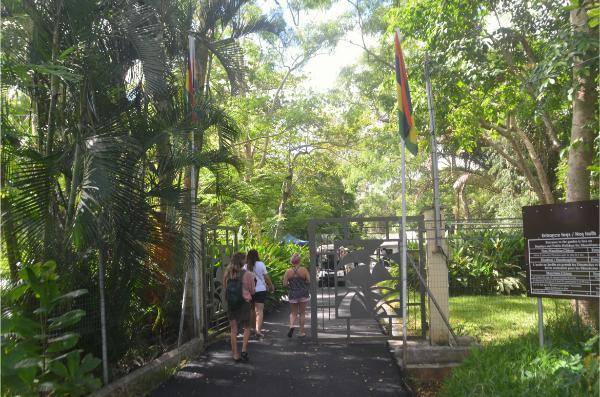
Affiliation disclosure: By purchasing goods or services via the links contained in this post, I may be earning a small commission from the seller's profit, without you being charged any extra penny. You will be thus greatly helping me to maintain and keep enriching this website. Thanks!
What to see in the National Botanical Garden of Mauritius
We spent a good couple of hours in the garden. That was enough to walk all the main paths and see all the major attractions. But if I had plenty of spare time, I wouldn’t get bored with bringing a book and staying there all day. The place was lovely. Here are some of its most interesting sights, in an order you could visit them following a general clockwise route:
Old sugar mill replica
An interesting contraption providing insight into how sugar was produced before the Industrial Revolution. The mill was built with a wooden frame housing three metallic cylinders spun by circling oxen. Poor slaves were forced to drive the canes through them and then haul the juice to an adjacent set of cauldrons for cooking. By the way, if you are particularly interested in Mauritius’s sugar history, there is also a sugar museum called L’Aventure du Sucre, 500 meters from the garden’s entrance.
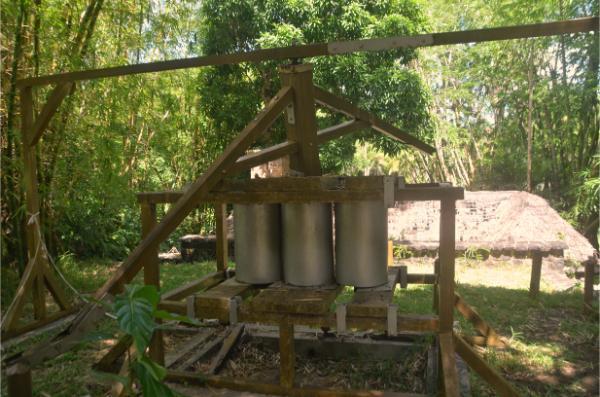
Le Chateau Mon Plaisir
This was the palatial residence of the garden’s director (must have been a well-paid position). It was built in 1823 on the site of Mahé de Labourdonnais’s original estate. Beside it stands a monument to Seewoosagur Ramgoolam and benches to chill.
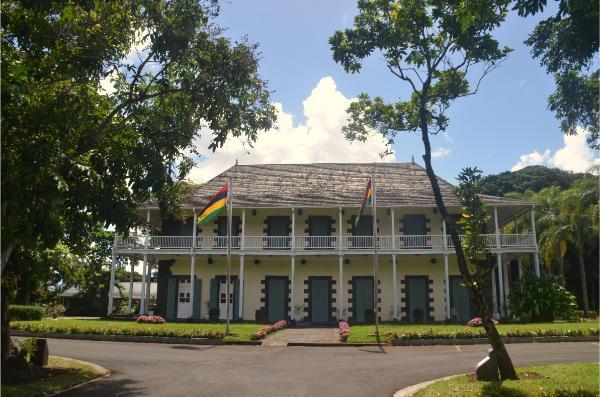
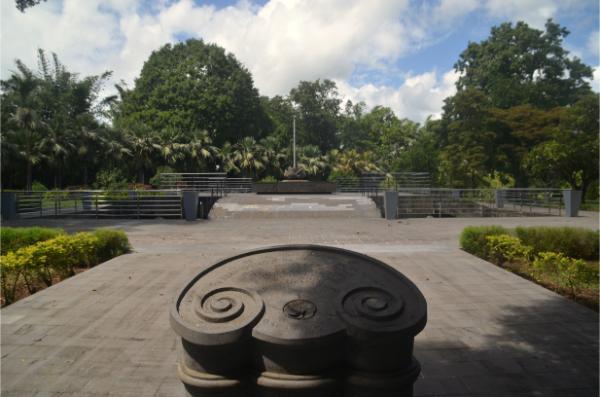
White lotus pond
A nice little crescentic pond hosting white lotus flowers. A few striated herons hung out on the spot.
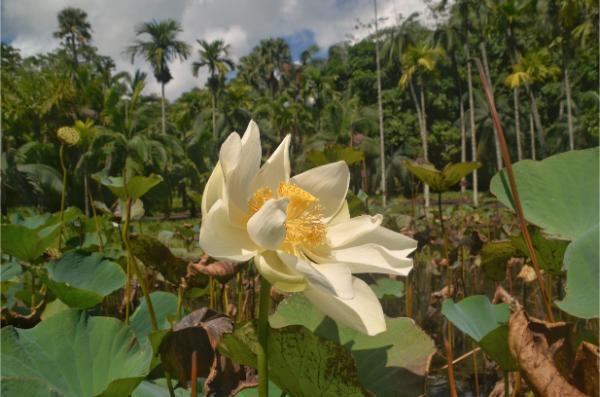
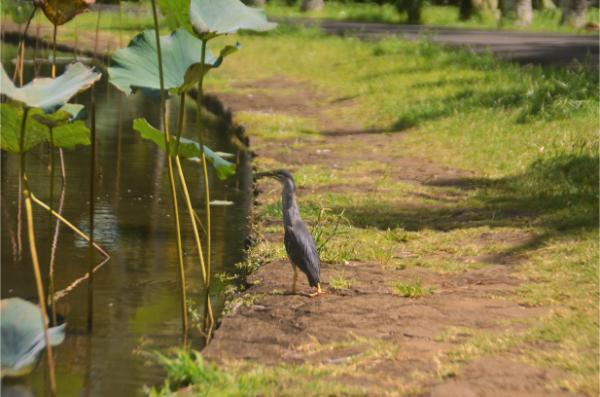
Giant waterlily pond
By far the garden’s most famous and photographed sight, for a good reason. Its entire surface is tightly covered with Victoria amazonica lily pads: the largest lilies in the world. As their name suggests, they are endemic to the Amazon River and were imported to Mauritius in the early 20th century. While in their natural habitat they can reach up to 3 meters in diameter, some of the ones on the spot approached 2 meters. Still pretty huge if you ask me. I had never seen something similar. I was tempted to jump and see if I could hop from one to another like in a video game.
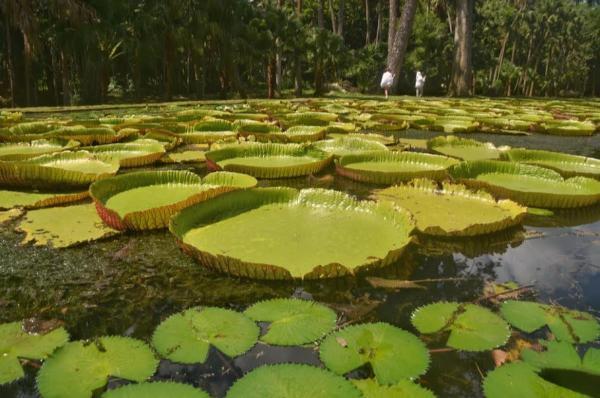
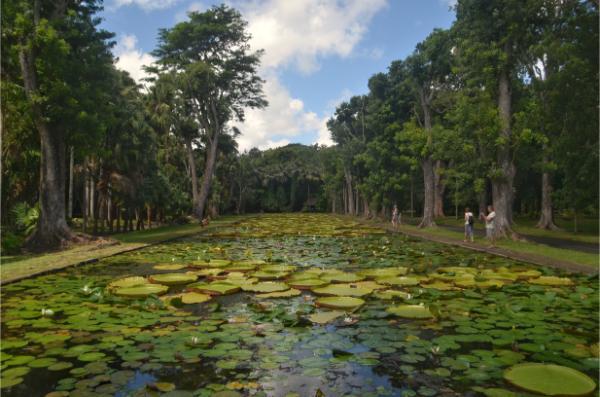
Rivier Citron
A mosquito-infested stream flowing through the south, lower portion of the garden. A picturesque stone bridge and some abandoned structures around. The park’s quietest part.
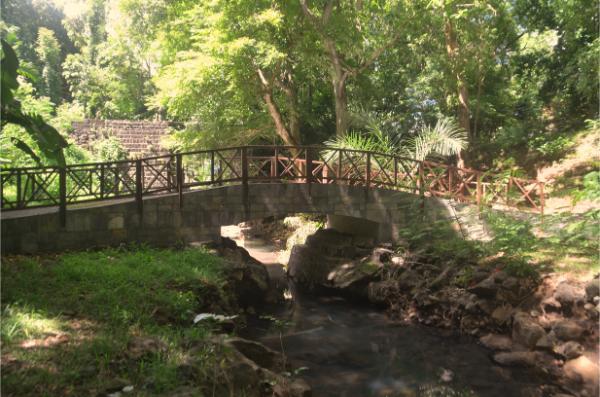
Old Gate and Colonne Lienard
An elaborate, white-painted iron gate. Redolent of Buckingham Palace’s gate in grandeur, it had won the respective first prize at the momentous 1826 London International Exhibition of Industry and Art. It must have once been the garden’s main gate but was now closed. Outside of it, you can see the old church of St Francois D’Assise. Next to it stands a white marble stele commemorating notable benefactors of the garden.
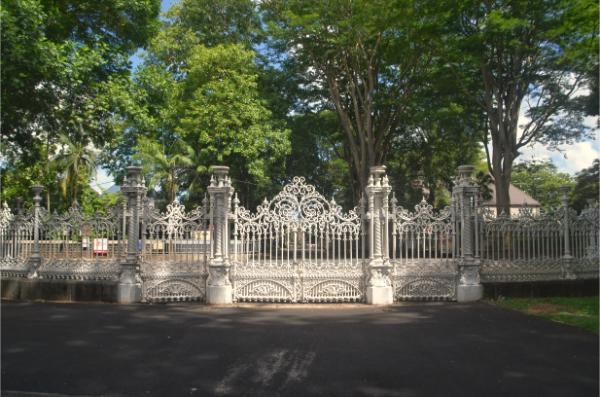
The big pond
The garden’s largest pond, enveloped in lush exotic vegetation, resembling a natural lake. It hosts a raft of playful ducks, and it contains two islets, one of which is accessible via two bridges and holds a picnic kiosk.
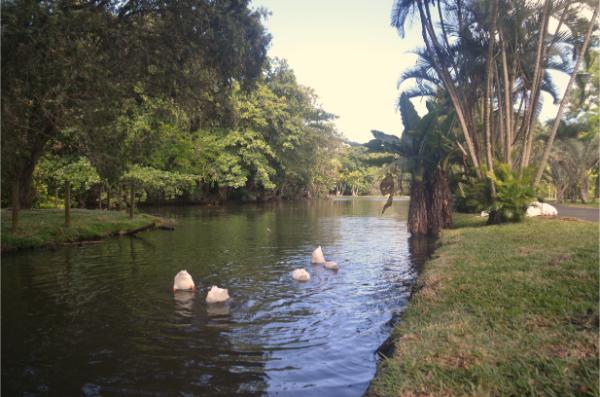
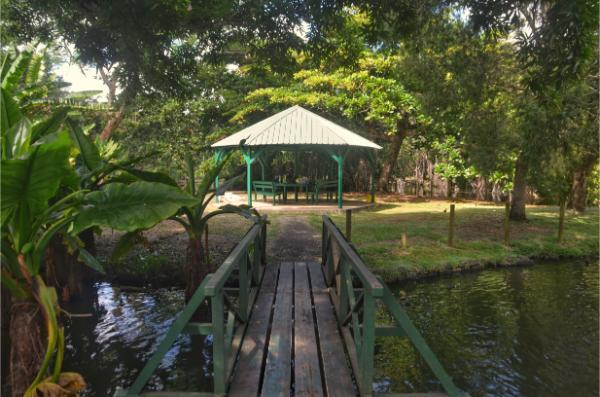
Giant tortoises and deer
A pen with giant tortoises reintroduced into Mauritius from mainland Africa. One of three places, besides Chamarel and Ile aux Aigrettes, we saw these impressive creatures in Mauritius. All of them were fast asleep upon our visit. The deer—introduced by the Dutch in the 17th century—in the next pen were wide awake and eager to snatch handfuls of grass and let us pet them through the fence.
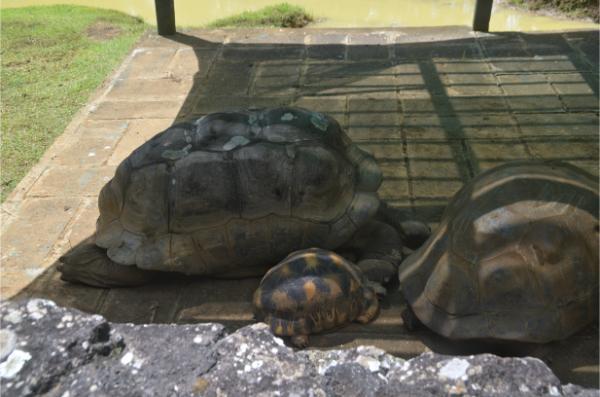
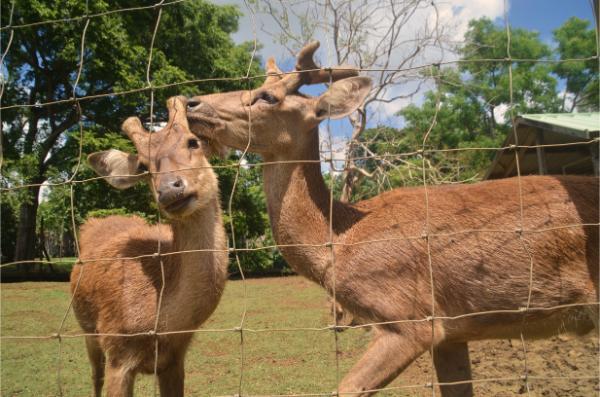
Red lotus pond
A tiny pond with a super-dense concentration of red lotus flowers.
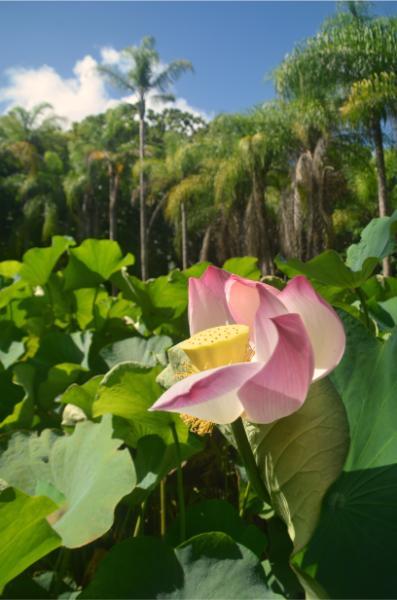
Tours
If you’d like a guide to show you the best spots and provide all the intricate details, they usually gather before the garden’s entrance. For reference, one guide told us he charged 75 MUR per person. Alternatively, you may join a combo tour that includes the botanical garden and other attractions, such as this:
Accommodation and activities in Mauritius
Stay22 is a handy tool that lets you search for and compare stays and experiences across multiple platforms on the same neat, interactive map. Hover over the listings to see the details. Click on the top-right settings icon to adjust your preferences; switch between hotels, experiences, or restaurants; and activate clever map overlays displaying information like transit lines or concentrations of sights. Click on the Show List button for the listings to appear in a list format. Booking via this map, I will be earning a small cut of the platform's profit without you being charged any extra penny. You will be thus greatly helping me to maintain and keep enriching this website. Thanks!
Photos
View (and if you want use) all my photographs from Sir Seewoosagur Ramgoolam Botanic Garden in higher resolution.
